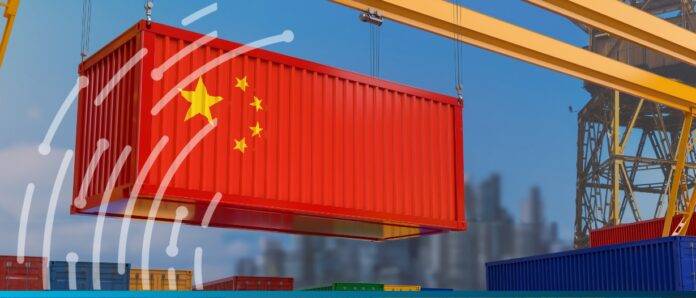In the latest report released on Monday, January 13, official data revealed that China’s trade surplus with the rest of the world had skyrocketed to an unprecedented $992 billion in the year 2024. This surge in trade surplus was driven by a remarkable monthly record in December, with the surplus reaching $104.8 billion, up from $97.4 billion in November. The growth in exports by 10.7% year-on-year, coupled with a minimal 1% increase in imports, widened the gap and sparked concerns from trading partners about the sustainability of Chinese surpluses and their potential to deindustrialize other economies.
The record-breaking surplus was primarily fueled by a persistent export drive, as Chinese manufacturers ramped up shipments to compensate for sluggish domestic demand. More than a third of this surplus was attributed to trade with the US, where the bilateral trade imbalance surged by 6.9% to $361.03 billion in 2024. Despite a slight decline in China’s exports to the US as a percentage of total shipments from the previous year, the surplus continued to grow, prompting concerns and calls for action.
As the incoming US President, Donald Trump, prepares to take office, he has made pledges to impose tariffs of up to 60% on Chinese goods and a flat 20% tariff on all US trading partners. Analysts at Swiss bank UBS anticipate that these tariffs could potentially reduce China’s GDP by 2.5 percentage points over the next 12 months, further intensifying global trade tensions.
To counterbalance potential disruptions, Chinese manufacturers have been diversifying their export markets, with shipments to Southeast Asian countries rising to 16.4% of total exports in 2024, up from 15.5% in 2023. However, this strategy could face obstacles if the US targets the rerouting of Chinese exports through regional partners, adding another layer of complexity to the trade landscape.
Under President Xi Jinping’s strategic vision to cultivate “new productive forces,” China has emerged as a prominent producer of green energy products, including solar panels and electric vehicle batteries. This shift has propelled China to surpass Japan as the world’s largest car exporter, signaling a significant transformation in the global economic landscape.
As uncertainties surrounding global trade continue to escalate with the implementation of new tariffs, the initial boost from front-loading activities may diminish, necessitating additional policy measures to bolster domestic demand and sustain economic growth. It is crucial for policymakers and stakeholders to navigate these complex trade dynamics and adapt to the evolving landscape to ensure long-term economic stability and prosperity.




